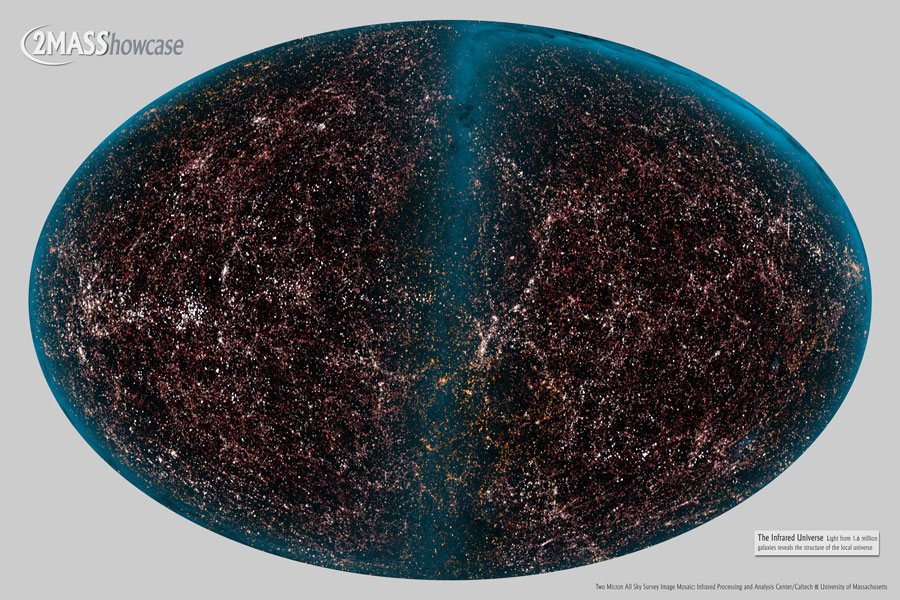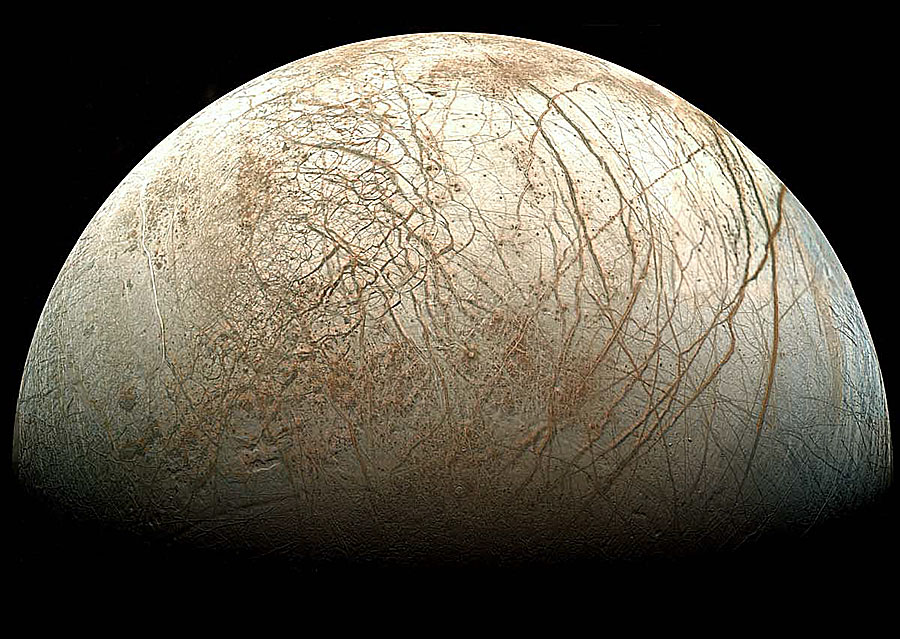
Thursday, June 30, 2011
Wednesday, June 29, 2011
Tuesday, June 28, 2011
youtube for the day/Acharya S showing how the Gospel story follows the Zodiac story
astro picture for the day
Credit & Copyright: John Davis
This is an interesting picture of the Pleiades; you can see much more gas/dust clouds surrounding them.
This is an interesting picture of the Pleiades; you can see much more gas/dust clouds surrounding them.
Monday, June 27, 2011
Sunday, June 26, 2011
astro picture for the day
Hubble space telescope image and one of Hubble's earliest greatest hits! The ring nebula was a favorite of everybody for a long time(i've seen it through a eight inch); this was a real pleasure when It first came out.
Saturday, June 25, 2011
Friday, June 24, 2011
Thursday, June 23, 2011
Wednesday, June 22, 2011
Tuesday, June 21, 2011
Science news found by Artificial Intelligence
http://esciencenews.com/
I've had this link for awhile; i'd hate to cover every science news item every day here on this blog; so, maybe just posting this rather unique science news site is better!
I've had this link for awhile; i'd hate to cover every science news item every day here on this blog; so, maybe just posting this rather unique science news site is better!
video for the day/ Jacob Bronowski interview/ Creative Mind: The Creative Personality
http://forum-network.org/lecture/creative-mind-creative-personality
I don't seem to be able to embed this.
I don't seem to be able to embed this.
non-astro image for the day!
Credit Smithsonian.
This is an engraving of a Mammoth on a bone . . . 13,000 years ago . . . in Florida(or at least, the bone was found in Florida).
This is an engraving of a Mammoth on a bone . . . 13,000 years ago . . . in Florida(or at least, the bone was found in Florida).
Monday, June 20, 2011
Sunday, June 19, 2011
Saturday, June 18, 2011
Friday, June 17, 2011
astro picture for the day
Nasa Galileo project image of Europa. Too bad the Galileo spacecraft was so limited in it's data abilities.
Thursday, June 16, 2011
astro picture for the day
a new Hubble space telescope image; the Hubble has taken this galaxy before; but, this image zooms into a part of the galaxy to get more detail; to bad they didn't do a mosaic of the whole galaxy.
Wednesday, June 15, 2011
Tuesday, June 14, 2011
thought for the day/ high technology
It's amazingling hard to get an online internet image of a Nuremberg Egg, the real 'high technology' before cars and airplanes and hydro-electric dams! The one, single image, I found using goodle images didn't start out with http, and the internet address was probably too long to include on blogs anyways!
Back to high technology . . . before Nuremberg eggs, boats and architecture was the high technology and I suppose various weaponry like catapolts. Just think of when scientific developments occured. Galileo and his swinging pendulum goes to the clock. But, chemistry and electricity didn't come around till the 1800s(there was alchemy, but that was science using vague notions of evil spirts therefore, something; there was the use of astrology; but, the astrology was not based on anything more than the motions of planets througg the zodiacal constellations).
There was the water powered industrialism of the Barbegal grain mills fed by miles of aqueducts. Point here is that the manufacturing technologies, places often out of the way of the majority of people that were the high technology centers. This water powered technology started again in the first Renaissance after the translations from Arab spain of Greek knowledge.
I think I found a good example here.
I probably should have posted about high technology before posting about hydro-electric dams; but, here we go.
Here's a nuclear fusion torrus,
The point being that after the steam engine and the hydro-electric power station removing us a step or so beyond just natural energy dependence, one way or another, we're about to(forced to actualy since the old energy technologies will run out due to the second law of thermodynamics) to make a step even further away from being in a natural state. I mean people grow up dependent and conditioned in a certain way; they get conditioned to learn in certain ways; if that technological base is removed, most people wouldn't know right from wrong in trying to learn and live as a hunter-gatheror.
- Despite most peoples idea of overcoming the previous technological base of humanity(fossil fuels) by means of either space solar power or nuclear fusion(or even fission if we don't figure out fusion; as far as I can tell, each different competing nuclear fusion idea has made their breakthroughs; it's all engineering and money to put humanity on a nuclear fusion basis right now), but it seems that there will be another high technology development that will generalize life really(not quite as dynamical as life). This is nanotechnology. The primary essence of this technology is that it is a manufacturing technology. But, it is so efficient, that it can create a sum net total of energy; it's products can be so efficient, the 'nanotechnologies' can be self powered or even powered by the movements of the people using them.
- Nanotechnologists have feared that nanotechnology can be developed in five years; and once developed, the technology can do a two week revolution. This hasn't happened. Seems to me that it won't happen quite like that. But, just over the past month or so, there's been so many breakthroughs that can help speed the development of nanomanufacturing that I've been too tired to make a post like this! There's been more than one way to speed the modeling and predicting of how amino-acids fold into proteints; if they can do this, then the biotech route to nanomanufacturing is well in hand. They've been making great advances in dna-nanotech; dna can be used as a scaffold to attach say proteins that can do some kind of mechanical functioning; either some machine took like a gear, or a axle, or be an enzyme to do atom by atom assembly . . . ; But, there's been some other pathways to nanomanufacturing breakthroughs as well!
Scanning tunnelling microscopes,
The scanning tunneling microscope is a true quantum technology just like the electron microscope and the laser(so are radios and radars actually!). The Scanning tunneling microscope takes data from a tip that is scanning across the surface and reconstructs by computer algorithms the data. The thing about this tip is that it uses quantum tunneling of electrons between the surface and the tip!(hence confirming quantum mechanics; another remarkable confirming of the frontiers of physics is the CERN Large Hadron Collider; to calibrate this like twenty plus kilometer particle accellerator, they confirmed all the quantum electrodynamics and electro-weak theory . . . in like 1983 and 4, the unification theory connecting the electromagnetic force with the weak nuclear force was confirmed at CERN . . . in like months!). The electric affects of this quantum tunneling of electrons is done by piezo-electronics; solid materials that change shape to electric charge. The images below the macroscale level stm(full of vacuum tubes!) are of atoms arranged in all kinds of patterns to do all kinds of physics experiments. I mean they've been imaging atoms since like the late 1970s!
- The Stm is one pathway generally being performed by Zyvex. They reported arranging fifty atoms a second last year; the keynote speaker of the upcoming 'foresight institute' conference is to be the Zyvex founder; seems he has some big news to announce!
I think I'll finish by showing some youtubes of major nanotech pathways of dna-nanotech and graphene nanotech.
I think I'll post some old Paul Rothmund youtubes which gives good overviews of the dna-nanotech pathway to nanomanufacturing.
here's another longer version
The bio-pathways and non-biopathways(such as stms and others like nanotubes) keep going back and forth in taking the lead on whether they can or when who's going to make even primitive nanomanufacturing happen first. This following graphene pathway may have put the another hat in the ring so to speak!
I should end this by pointing out that almost on a weekly basis, quantum computer advances are announced. Nanomanufacturing can do to all the technologies we know of like energy, aircraft, automobiles, spacecraft, medical, what sizing down did for computers. In the end, it can make whatever is conceptually/mathematically possible. But, quantum computers can break open the quantum world. Nanomanufacturing can make for computing and artificial intelligence that can make technological development that would make the twentieth century seem like what the stone age was to the twentieth century. Quantum computers can solve problems and open up quantum technologies that are beyond nanotechnology. In the 1990s, there were mathematical breakthroughs suggesing wormholes are technologically possible(i've seen reports of physicists who have bottled up negative matter that is needed for wormholes to be stable; of course, in vary low quantitites); quantum computers would probably compute them; teleportation(yes, as in star trek) was proven in the 1990s. Quantum computers would probably go a long way towards making those possible on a macroscale.
Quantum physicists have shown that it is possible to do some really wild technologies in the future using quantum dots(solar power of like 90% efficiencies is like one little possible application) can make for alternative chemistries. Quantum computers would help compute those with comparable ease.
Bottom line, it's looking like nanomanufacturing is going to start happening within five years. A few years after that, they'll probably be able to speed the development of quantum computers. The rate of science and technological development would have already startled the anti-science religions of the world. But, then the quantum computers will hit their stride. The next ten years is going to see the possibility of life as long as people want to live, the space frontier will be a piece of cake; the anti-science heads will uncork, and well, i'll probably be a happy man finally.
- Oh yes, I forgot another remarkable general technology - chaotic dynamcis controls. Chaotic dynamics is a kind of stabilized(by means of negative feedback loops) instability(positive feedback loops). We've already seen some application of chaotic dynamics controls - electron microscopes. One of the big quantum technologies latelly has been a kind of coupling of photons with electrons. These plasmons have applications to actual cloaking devices(yes, again star trekkish technologies; they've just recently announced after rapidly succeeding in cloaking other than visible wavelengths, 'a' visible wavelength; but, only a vary narrow wavelength), but also 'perfect lenses.' Electron microscoples and microscopes in general could not see actual atoms; now, because of these quantum technologies, they can make perfect lenses and they've been seeing atoms with electron microscopes; they've made movies of atoms thermo-gittering; they even done some self-assembly of buckyballs with these new high-tech electron microscopes.
- I got carried away. What i really wanted to point out is that scientific instruments are one of the underrated 'high tech' nologies after things like manufacturing technologies(which are often using some kind of scientific instruments).
I'm thinking certainly of particle accellerators, telescopes, and electron microscopes, also stms, but here's where it all meets - clean rooms.
I suppose I don't know the most advanced cleanrooms. They're advancing yearly. They cost billions of dollars(zyvex likes to point out how while the cleanrooms get more expensive to make tinier and tinier computer chips; they're nanomanufacturing system gets cheaper and cheaper); i've heard of nanotechnology cleanrooms that not only make for dust free, but electrostatic free, vibration dampers . . . all manner of damming up nature;
Nanomanufacturing will make nuclar fusion(some of the breakthroughs to making fusion practical use chaotic dynamics controls) obsolete, but also all these cleanrooms!
Back to high technology . . . before Nuremberg eggs, boats and architecture was the high technology and I suppose various weaponry like catapolts. Just think of when scientific developments occured. Galileo and his swinging pendulum goes to the clock. But, chemistry and electricity didn't come around till the 1800s(there was alchemy, but that was science using vague notions of evil spirts therefore, something; there was the use of astrology; but, the astrology was not based on anything more than the motions of planets througg the zodiacal constellations).
There was the water powered industrialism of the Barbegal grain mills fed by miles of aqueducts. Point here is that the manufacturing technologies, places often out of the way of the majority of people that were the high technology centers. This water powered technology started again in the first Renaissance after the translations from Arab spain of Greek knowledge.
I think I found a good example here.
I probably should have posted about high technology before posting about hydro-electric dams; but, here we go.
Here's a nuclear fusion torrus,
The point being that after the steam engine and the hydro-electric power station removing us a step or so beyond just natural energy dependence, one way or another, we're about to(forced to actualy since the old energy technologies will run out due to the second law of thermodynamics) to make a step even further away from being in a natural state. I mean people grow up dependent and conditioned in a certain way; they get conditioned to learn in certain ways; if that technological base is removed, most people wouldn't know right from wrong in trying to learn and live as a hunter-gatheror.
- Despite most peoples idea of overcoming the previous technological base of humanity(fossil fuels) by means of either space solar power or nuclear fusion(or even fission if we don't figure out fusion; as far as I can tell, each different competing nuclear fusion idea has made their breakthroughs; it's all engineering and money to put humanity on a nuclear fusion basis right now), but it seems that there will be another high technology development that will generalize life really(not quite as dynamical as life). This is nanotechnology. The primary essence of this technology is that it is a manufacturing technology. But, it is so efficient, that it can create a sum net total of energy; it's products can be so efficient, the 'nanotechnologies' can be self powered or even powered by the movements of the people using them.
- Nanotechnologists have feared that nanotechnology can be developed in five years; and once developed, the technology can do a two week revolution. This hasn't happened. Seems to me that it won't happen quite like that. But, just over the past month or so, there's been so many breakthroughs that can help speed the development of nanomanufacturing that I've been too tired to make a post like this! There's been more than one way to speed the modeling and predicting of how amino-acids fold into proteints; if they can do this, then the biotech route to nanomanufacturing is well in hand. They've been making great advances in dna-nanotech; dna can be used as a scaffold to attach say proteins that can do some kind of mechanical functioning; either some machine took like a gear, or a axle, or be an enzyme to do atom by atom assembly . . . ; But, there's been some other pathways to nanomanufacturing breakthroughs as well!
Scanning tunnelling microscopes,
The scanning tunneling microscope is a true quantum technology just like the electron microscope and the laser(so are radios and radars actually!). The Scanning tunneling microscope takes data from a tip that is scanning across the surface and reconstructs by computer algorithms the data. The thing about this tip is that it uses quantum tunneling of electrons between the surface and the tip!(hence confirming quantum mechanics; another remarkable confirming of the frontiers of physics is the CERN Large Hadron Collider; to calibrate this like twenty plus kilometer particle accellerator, they confirmed all the quantum electrodynamics and electro-weak theory . . . in like 1983 and 4, the unification theory connecting the electromagnetic force with the weak nuclear force was confirmed at CERN . . . in like months!). The electric affects of this quantum tunneling of electrons is done by piezo-electronics; solid materials that change shape to electric charge. The images below the macroscale level stm(full of vacuum tubes!) are of atoms arranged in all kinds of patterns to do all kinds of physics experiments. I mean they've been imaging atoms since like the late 1970s!
- The Stm is one pathway generally being performed by Zyvex. They reported arranging fifty atoms a second last year; the keynote speaker of the upcoming 'foresight institute' conference is to be the Zyvex founder; seems he has some big news to announce!
I think I'll finish by showing some youtubes of major nanotech pathways of dna-nanotech and graphene nanotech.
I think I'll post some old Paul Rothmund youtubes which gives good overviews of the dna-nanotech pathway to nanomanufacturing.
here's another longer version
The bio-pathways and non-biopathways(such as stms and others like nanotubes) keep going back and forth in taking the lead on whether they can or when who's going to make even primitive nanomanufacturing happen first. This following graphene pathway may have put the another hat in the ring so to speak!
I should end this by pointing out that almost on a weekly basis, quantum computer advances are announced. Nanomanufacturing can do to all the technologies we know of like energy, aircraft, automobiles, spacecraft, medical, what sizing down did for computers. In the end, it can make whatever is conceptually/mathematically possible. But, quantum computers can break open the quantum world. Nanomanufacturing can make for computing and artificial intelligence that can make technological development that would make the twentieth century seem like what the stone age was to the twentieth century. Quantum computers can solve problems and open up quantum technologies that are beyond nanotechnology. In the 1990s, there were mathematical breakthroughs suggesing wormholes are technologically possible(i've seen reports of physicists who have bottled up negative matter that is needed for wormholes to be stable; of course, in vary low quantitites); quantum computers would probably compute them; teleportation(yes, as in star trek) was proven in the 1990s. Quantum computers would probably go a long way towards making those possible on a macroscale.
Quantum physicists have shown that it is possible to do some really wild technologies in the future using quantum dots(solar power of like 90% efficiencies is like one little possible application) can make for alternative chemistries. Quantum computers would help compute those with comparable ease.
Bottom line, it's looking like nanomanufacturing is going to start happening within five years. A few years after that, they'll probably be able to speed the development of quantum computers. The rate of science and technological development would have already startled the anti-science religions of the world. But, then the quantum computers will hit their stride. The next ten years is going to see the possibility of life as long as people want to live, the space frontier will be a piece of cake; the anti-science heads will uncork, and well, i'll probably be a happy man finally.
- Oh yes, I forgot another remarkable general technology - chaotic dynamcis controls. Chaotic dynamics is a kind of stabilized(by means of negative feedback loops) instability(positive feedback loops). We've already seen some application of chaotic dynamics controls - electron microscopes. One of the big quantum technologies latelly has been a kind of coupling of photons with electrons. These plasmons have applications to actual cloaking devices(yes, again star trekkish technologies; they've just recently announced after rapidly succeeding in cloaking other than visible wavelengths, 'a' visible wavelength; but, only a vary narrow wavelength), but also 'perfect lenses.' Electron microscoples and microscopes in general could not see actual atoms; now, because of these quantum technologies, they can make perfect lenses and they've been seeing atoms with electron microscopes; they've made movies of atoms thermo-gittering; they even done some self-assembly of buckyballs with these new high-tech electron microscopes.
- I got carried away. What i really wanted to point out is that scientific instruments are one of the underrated 'high tech' nologies after things like manufacturing technologies(which are often using some kind of scientific instruments).
I'm thinking certainly of particle accellerators, telescopes, and electron microscopes, also stms, but here's where it all meets - clean rooms.
I suppose I don't know the most advanced cleanrooms. They're advancing yearly. They cost billions of dollars(zyvex likes to point out how while the cleanrooms get more expensive to make tinier and tinier computer chips; they're nanomanufacturing system gets cheaper and cheaper); i've heard of nanotechnology cleanrooms that not only make for dust free, but electrostatic free, vibration dampers . . . all manner of damming up nature;
Nanomanufacturing will make nuclar fusion(some of the breakthroughs to making fusion practical use chaotic dynamics controls) obsolete, but also all these cleanrooms!
Monday, June 13, 2011
youtube for the day/James Burke's "Connections episode 1" about Hydro-electric dams
My last post with anything more than pictures was about how the Europeans took awhile to 'get it' with respect to all the translations of ancient Greek mathematical thought from the Arabs. I'm related that to James Burke's "Connections" here because he talks about the hydro-electric dam and how that puts us more than a few steps beyond just relying on mother nature to suppy all the food needed to survive. And, if you've read my ideas about the nature and origin of mathematical knowledge, then you see the relations between this episode of James Burke's "Connections" and that post about the Europeans coming out of the dark ages.
Sunday, June 12, 2011
Saturday, June 11, 2011
Friday, June 10, 2011
astro picture for the day
Image Credit & Copyright:
Robert Gendler (Processing), Ryan Hannahoe (Acquisition)
Additional data from the ESO/Danish
1.5m telescope at La Silla, Chile (R.Gendler,
J.-E.Ovaldsen, C.Thöne, C.Feron).
Robert Gendler (Processing), Ryan Hannahoe (Acquisition)
Additional data from the ESO/Danish
1.5m telescope at La Silla, Chile (R.Gendler,
J.-E.Ovaldsen, C.Thöne, C.Feron).
Wednesday, June 8, 2011
Tuesday, June 7, 2011
quote for the day
"The history of empires is that of men's misery. The history of the sciences is that of their grandeur and happiness." - Edward Gibbon, 1761(author of the rise and fall of the roman empire)
Monday, June 6, 2011
astro picture for the day
Nasa Cassini probe image of Hyperion, a saturn asteroid moon. This moon tumbles in a chaotic dynamics pattern(chaos theory).
Saturday, June 4, 2011
Friday, June 3, 2011
astro picture for the day
Credit: Descubre Foundation,
CAHA, OAUV, DSA, Vicent Peris (OAUV), Jack Harvey (SSRO), Juan Conejero (PixInsight)
CAHA, OAUV, DSA, Vicent Peris (OAUV), Jack Harvey (SSRO), Juan Conejero (PixInsight)
Thursday, June 2, 2011
Wednesday, June 1, 2011
thought for the day
What happened between the Spanish arabs and Europe was before what happened
to(mostly) Italy and the fall of the Byzantine empire. The dates are obvious;
the Arabs more or less fell around 1000 A.D.; the Byzantine empire fell around
1500 A.D.
The interaction between the Spanish Arabs and the Europeans
caused a pre-renaissance; it caused the crusades; it caused the Inquisition; the
knowledge that came out of Arab spain could only be copied so far; meaning, only
so many people could learn of all this knowledge; it was more for geeks like
Adelard who went out of their way to go into spain; real knowledge seekers; not
just guys who get hit on their head when some cultural force finds them. But,
this initial renaisance also was more about translation and commentary such as
Francis Bacon(or Roger bacon; i still get those two confused); they learned
about Aristotle and Plato; they certainly saw Euclid's elements; but . . . have
you looked at Euclid's elements? If you were even an Arab back then much less
some biblical copyist who first opens up a copy of Euclid's "Elements", you'd
probably burn it, throw it away, or loose it on the shelves(they didn't have any
form of order in the libraries of the christian monastaries back then; books
just got lost!); i mean, this thing starts out with a list of axioms, then
definitions; at which point, your like 'so what!?' Then, it goes straight into
theorem proving! If you don't have a clue about what deductive logic means and
how it works, you are lost by theorem one! Your only clue is Aristotle and
Plato; and, if you havn't gone through their mass of works and found the clues,
and gone through a period of reflection to note, dah! deduction! That must be
what all this theorem proving is in Euclid's "Elements", then, once again, that
literature was completelly meaningless to the majority of Europe . . .
anybody!
And then, the black plague destroyed any hope of this initial
renaissance to capitalize on this knowledge from Arab Spain. Then came a second
influx from the Byzantine empire!
What happened when the Byzantine empire
fell was that the printing press happened about the same time, the scholars from
the Byzantine empire knew what deductive logic meant in the first place. And, in
the end, Galileo was influenced to do his studies by all the scholars that came
before him about Aristotles physics. If it hadn't been for all that time and
effort to figure out what all that Greek knowledge meant, Galileo would have had
to spend all that time figuring out what all that meant.
This is why the
killing of Archimedes was such a tragedy; the Romans did not learn from him when
they could have. This is why the destruction of Athens was also a tragedy;
because, you can't just expect some culture that hasn't figured these things out
to figure it all out; it has to go through periods of development to even begin
on knew research, or to even understand something like the mathematics the
Greeks invented(a deductive approach to all the Babylonian mathematics; and
then, the Greeks went a little bit farther; although, from the Babylonian
viewpoint . . . except for the algebra of the Babylonians . . . was far beyond
anything they could ever imagine; trig, number theory . . . the infinitude of
prime numbers . . . conic sections, irrational numbers, Archimedes proof and
calculation as oppossed to mere measurement of Pi, some intial work on
integrations and differentiations, the balancing point of irregular shaped
surfaces, the use of higher curves to solve the three Greek classical problems;
the trisection of angles, the doubling of cubes, the squaring of the circle).
This is the tragedy of the dark ages; this is why the dark ages were the dark
ages!
I thought I'd put a bit of my review of Van Der Waerden's "Science
Awakening" in here to update my account of Archemedes!
'Most people have
heard of Archemedes; but, do they have any idea of why he is so highly regarded?
Highly douteful! For one thing(and this goes for all Greek mathematicians back
then), all mathematics was done in terms of an awkward geometrized
algebra(Eudoxes was highly regarded by Greek mathematicians like Plato because
he perfected it and made is fairly workable). So, when Archemedes proves
deductively how to calculate Pie(a double reductio absurdium proof!), he then
calculates it with this geometrized algebra! It's hard to appreciate the
difficulties that are brought in here that leaves those who look at this
absolutely intellectualy drunk; it's like when you show the trigonometry(and
Archemedes practicaly shows the way towards developing a trigonometry in his
calculation of pie) that comes from an isosceles triange; you find that one of
the sides requires a radical expression; now imagine having to do this with
geometrical algebra, and you should be feeling just . . . ; I've yet to explain
what makes this all amazing actually. The Babylonians at least observed that two
different sized circles have the same ratio of diameter to circumference. This
was proved in Euclid's Elements. C=(pie)D. But, what is pie(meaning the
numerical value)? As I've stated, Archemedes relates the area to the legs of a
right angle triangle. Basicaly, he's related the two dimensional property of
area to that of the one dimensinal constant of the circumference. Now, because
the area of a triangle is 1/2hb, we get (pie)r(squared). Archemedes goes on to
calculate the circumference of the circle as already described. But, then
Archemedes goes on to use much of the same strategy he used to show the way
towards calculating pie to calculating the area and volume of a sphere; he
relates the second and thired dimensions together! Euclid's "Elements" shows the
plane and solid geometry of his day before(and much else like number theory);
but, the solid geometry is flawed in areas; Archemdes comes up with this
dimensional analyses solution to the theory of solid geometry! That alone puts
him above most!
But! Archemedes goes on to do primitive calculus(using
geometrical algebra), he calculates the center of balance of odd shaped
figures(like obtuse and scalene triangles), he uses arithmetic and geometric
progressions to handle large numbers(and to deal with much of his irregular
surface results); he solved the area of triangles which is normaly attributed to
Heron(trigonomery students should know what I'm talking about). Some stuff that
was knew to me from Van Der Waerden that I didn't know before are Archemedes
construction of the hexagon which turns out to not be constructable by
straightedge and compass(a Plato restriction which isn't mathematical valid but
does have some mathematicaly interesting things; more on this later); Archemedes
constructs it with conics. Van Der Waerden relates that Pappas notes that
Archemedes constructed and explored much semi-regular solids(you can't be a
mathematician or consider yourself a mathematica enthusiasts if you don't know
what I'm talking about here). By this time, you should be putting Archemedes up
there with Gauss and many others!'
to(mostly) Italy and the fall of the Byzantine empire. The dates are obvious;
the Arabs more or less fell around 1000 A.D.; the Byzantine empire fell around
1500 A.D.
The interaction between the Spanish Arabs and the Europeans
caused a pre-renaissance; it caused the crusades; it caused the Inquisition; the
knowledge that came out of Arab spain could only be copied so far; meaning, only
so many people could learn of all this knowledge; it was more for geeks like
Adelard who went out of their way to go into spain; real knowledge seekers; not
just guys who get hit on their head when some cultural force finds them. But,
this initial renaisance also was more about translation and commentary such as
Francis Bacon(or Roger bacon; i still get those two confused); they learned
about Aristotle and Plato; they certainly saw Euclid's elements; but . . . have
you looked at Euclid's elements? If you were even an Arab back then much less
some biblical copyist who first opens up a copy of Euclid's "Elements", you'd
probably burn it, throw it away, or loose it on the shelves(they didn't have any
form of order in the libraries of the christian monastaries back then; books
just got lost!); i mean, this thing starts out with a list of axioms, then
definitions; at which point, your like 'so what!?' Then, it goes straight into
theorem proving! If you don't have a clue about what deductive logic means and
how it works, you are lost by theorem one! Your only clue is Aristotle and
Plato; and, if you havn't gone through their mass of works and found the clues,
and gone through a period of reflection to note, dah! deduction! That must be
what all this theorem proving is in Euclid's "Elements", then, once again, that
literature was completelly meaningless to the majority of Europe . . .
anybody!
And then, the black plague destroyed any hope of this initial
renaissance to capitalize on this knowledge from Arab Spain. Then came a second
influx from the Byzantine empire!
What happened when the Byzantine empire
fell was that the printing press happened about the same time, the scholars from
the Byzantine empire knew what deductive logic meant in the first place. And, in
the end, Galileo was influenced to do his studies by all the scholars that came
before him about Aristotles physics. If it hadn't been for all that time and
effort to figure out what all that Greek knowledge meant, Galileo would have had
to spend all that time figuring out what all that meant.
This is why the
killing of Archimedes was such a tragedy; the Romans did not learn from him when
they could have. This is why the destruction of Athens was also a tragedy;
because, you can't just expect some culture that hasn't figured these things out
to figure it all out; it has to go through periods of development to even begin
on knew research, or to even understand something like the mathematics the
Greeks invented(a deductive approach to all the Babylonian mathematics; and
then, the Greeks went a little bit farther; although, from the Babylonian
viewpoint . . . except for the algebra of the Babylonians . . . was far beyond
anything they could ever imagine; trig, number theory . . . the infinitude of
prime numbers . . . conic sections, irrational numbers, Archimedes proof and
calculation as oppossed to mere measurement of Pi, some intial work on
integrations and differentiations, the balancing point of irregular shaped
surfaces, the use of higher curves to solve the three Greek classical problems;
the trisection of angles, the doubling of cubes, the squaring of the circle).
This is the tragedy of the dark ages; this is why the dark ages were the dark
ages!
I thought I'd put a bit of my review of Van Der Waerden's "Science
Awakening" in here to update my account of Archemedes!
'Most people have
heard of Archemedes; but, do they have any idea of why he is so highly regarded?
Highly douteful! For one thing(and this goes for all Greek mathematicians back
then), all mathematics was done in terms of an awkward geometrized
algebra(Eudoxes was highly regarded by Greek mathematicians like Plato because
he perfected it and made is fairly workable). So, when Archemedes proves
deductively how to calculate Pie(a double reductio absurdium proof!), he then
calculates it with this geometrized algebra! It's hard to appreciate the
difficulties that are brought in here that leaves those who look at this
absolutely intellectualy drunk; it's like when you show the trigonometry(and
Archemedes practicaly shows the way towards developing a trigonometry in his
calculation of pie) that comes from an isosceles triange; you find that one of
the sides requires a radical expression; now imagine having to do this with
geometrical algebra, and you should be feeling just . . . ; I've yet to explain
what makes this all amazing actually. The Babylonians at least observed that two
different sized circles have the same ratio of diameter to circumference. This
was proved in Euclid's Elements. C=(pie)D. But, what is pie(meaning the
numerical value)? As I've stated, Archemedes relates the area to the legs of a
right angle triangle. Basicaly, he's related the two dimensional property of
area to that of the one dimensinal constant of the circumference. Now, because
the area of a triangle is 1/2hb, we get (pie)r(squared). Archemedes goes on to
calculate the circumference of the circle as already described. But, then
Archemedes goes on to use much of the same strategy he used to show the way
towards calculating pie to calculating the area and volume of a sphere; he
relates the second and thired dimensions together! Euclid's "Elements" shows the
plane and solid geometry of his day before(and much else like number theory);
but, the solid geometry is flawed in areas; Archemdes comes up with this
dimensional analyses solution to the theory of solid geometry! That alone puts
him above most!
But! Archemedes goes on to do primitive calculus(using
geometrical algebra), he calculates the center of balance of odd shaped
figures(like obtuse and scalene triangles), he uses arithmetic and geometric
progressions to handle large numbers(and to deal with much of his irregular
surface results); he solved the area of triangles which is normaly attributed to
Heron(trigonomery students should know what I'm talking about). Some stuff that
was knew to me from Van Der Waerden that I didn't know before are Archemedes
construction of the hexagon which turns out to not be constructable by
straightedge and compass(a Plato restriction which isn't mathematical valid but
does have some mathematicaly interesting things; more on this later); Archemedes
constructs it with conics. Van Der Waerden relates that Pappas notes that
Archemedes constructed and explored much semi-regular solids(you can't be a
mathematician or consider yourself a mathematica enthusiasts if you don't know
what I'm talking about here). By this time, you should be putting Archemedes up
there with Gauss and many others!'
Subscribe to:
Posts (Atom)



























